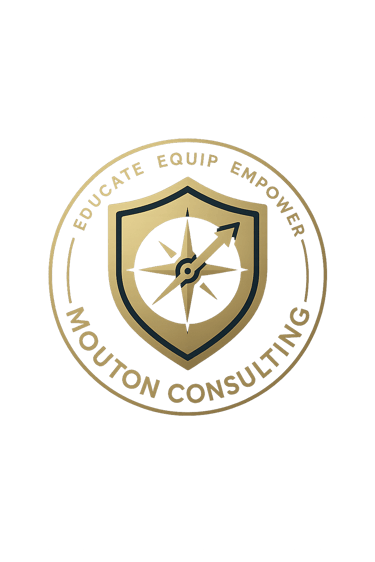Patience, Persistence, and Performance: The Long Game of Leadership
True leadership isn’t measured by how fast you move it’s revealed in how long you can sustain purpose, discipline, and direction. In Patience, Persistence, and Performance: The Long Game of Leadership, Dr. Marion Mouton reflects on the evolution from leading with urgency to leading with endurance. Through the lens of the 3 P’s, this post explores how patience cultivates clarity, persistence builds resilience, and performance transforms preparation into impact. Drawing on personal experience and current research, it offers practical strategies for leaders who want to move beyond short-term wins to long-term excellence. Because leadership mastery isn’t built in the rush of the moment it’s forged in the rhythm of consistent, deliberate growth.
10/19/20255 min read


When I look back over my leadership journey, I see a story defined not by perfection but by progression. Early in my career, I equated effectiveness with speed. The faster I could move, the more I believed I was leading. I thought momentum meant mastery.
But experience has a way of humbling you into wisdom. I learned that true leadership doesn’t live in constant motion it lives in sustained direction. It’s not the sprint that defines a leader, but the stride that can be held when things get hard.
That’s where I began to understand the value of patience, persistence, and performance.
Patience taught me to slow down before speaking, to see the whole picture before reacting, and to trust that growth takes time. I learned that some of the best leadership moments happen between the noise in the quiet where reflection becomes revelation.
Persistence reshaped how I approach adversity. There were times when it felt like every step forward came with resistance turnaround seasons, staffing transitions, culture shifts. But leadership demanded endurance. Persistence isn’t about ignoring challenges; it’s about staying the course through them, anchored by conviction rather than convenience.
And performance that came when the lessons became lived habits. When the preparation, the discipline, and the reflection fused into clarity. Performance is the visible outcome of invisible practice, and mastery comes when the process becomes part of who you are.
I used to think leadership was about getting it right. Now I know it’s about getting better.
Patience gave me peace.
Persistence gave me purpose.
Performance gave me proof.
Each one shaped not just how I lead, but who I am when I lead.*
The lesson I carry forward is simple but timeless: success that lasts is built slowly, intentionally, and with discipline that outlives motivation.
“Small, consistent effort will always outperform short, intense energy.” Dr. Marion Mouton
And that’s what mastery really is not perfection, but progress with purpose.
Recent research continues to affirm that leadership mastery depends more on sustained behavior than on short-term achievement. Harvard Business Publishing Corporate Learning’s 2024 Global Leadership Development Study found that organizations now prioritize “long-term behavioral consistency” over episodic performance (Harvard Business Publishing Corporate Learning, 2024). Similarly, Kruse (2024) reported that leaders who develop consistent daily habits outperform those who rely on intensity or charisma alone.
In other words: your habits will take you further than your hopes ever could.
Educate: The Three Pillars of Mastery
1. Patience The Art of Timing
Patience gives clarity its space to breathe. Leaders who rush to react often miss the lesson in the moment. When you learn to wait wisely, you begin to see more clearly.
Modern research calls patience a core leadership virtue that enables resilience in uncertainty (Waldner, 2023; Thill, 2024). It allows space for self-regulation, reflective thinking, and informed decision-making all essential in high-stakes environments.
In leadership, impatience often disguises itself as urgency. But urgency without understanding creates waste. Patience, when practiced intentionally, becomes a form of emotional intelligence it slows your reactions so your strategy can mature.
“Patience is not the ability to wait, but the ability to keep a good attitude while waiting.” Joyce Meyer
2. Persistence The Engine of Consistency
Persistence isn’t about never stopping it’s about never staying stopped. It’s waking up to the same mission on hard days and finding new reasons to keep going.
Leadership isn’t about one big push. It’s thousands of small, invisible pushes that no one claps for but that change everything. Persistence creates momentum, and momentum creates transformation.
However, persistence must be balanced. Palmer and Brue (2024) note that unrestrained persistence can turn counterproductive if it becomes stubbornness rather than strategic endurance. The difference lies in reflection checking whether the effort still aligns with purpose.
“Energy and persistence conquer all things.” Benjamin Franklin
The most resilient leaders are those who treat progress as a pattern, not a performance. They know consistency compounds, even when no one is watching.
3. Performance The Expression of Discipline
Performance is the byproduct of preparation. It’s the outcome of patience and persistence working together. Leaders perform best not because they’re perfect—but because they’re prepared.
Recent large-scale research confirms this: sustained leadership behaviors directly improve team performance (Englmaier, 2025). Preparation builds predictability; predictability builds trust; and trust produces results.
Performance is when your habits become reflexes when your preparation shows up naturally under pressure. That’s not luck it’s leadership muscle memory.
“We don’t rise to the level of our expectations; we fall to the level of our training.” Archilochus
Empower: Turning the 3 P’s into Daily Leadership Practice
The disciplined leader understands that excellence is built one decision at a time. Patience guides when to act, persistence drives why to act, and performance reflects how you act.
If you want your people to follow your lead, they must first trust your rhythm. Leaders who shift direction constantly exhaust their teams. Leaders who model steady persistence energize them.
When you are patient with your process, persistent in your pursuit, and disciplined in your performance, your example becomes contagious. You teach others to slow down, stay the course, and show up fully prepared.
Empowerment Mantra:
Patience creates stability.
Persistence creates reliability.
Performance creates credibility.
Together, they build the kind of trust that outlasts trends.
Equip: Practical Applications for Leaders
Create a Compounding Routine. Choose one habit to improve 1 percent daily. Track it for 30 days. Small gains multiply into major growth.
Identify Your “Patience Zone.” Where are you rushing the process? Delay one decision intentionally this week to gain perspective.
Celebrate Persistence, Not Perfection. Highlight effort and consistency in meetings. This shifts culture from fear of failure to pride in process.
Evaluate Performance Regularly. Schedule reflection blocks for personal performance reviews. Ask: What’s working? What’s wasted energy? What can be refined?
Teach the 3 P’s to Your Team. Embed them into feedback, coaching, and recognition systems. Reward patience under pressure and persistence through challenges.
Clarity & Consistency: The Leadership Multiplier
Clarity gives direction. Consistency gives momentum.
Together, they transform the 3 P’s from words into culture.
At the Leadership Academy at Leonard or in any thriving organization excellence is never accidental. It’s the result of consistent, disciplined leadership practiced daily.
“Don’t confuse urgency with importance. The work that matters most often grows in the soil of patience.” Dr. Marion Mouton
When your leadership is guided by patience, fueled by persistence, and proven through performance, you stop chasing results and start becoming the standard.
Final Thought
Leadership mastery is the long game. It’s not built in the spotlight it’s built in the silence of consistent effort. Every ounce of discipline today spares a ton of regret tomorrow.
“Great works are performed not by strength but by perseverance.” Samuel Johnson
Call to Action
Audit your week. Where do you need more patience? Where can you be more persistent? Where must you raise your level of performance? Choose one area and commit.
Reflective Leadership Questions
What process in my leadership am I rushing?
How do I respond when progress feels invisible?
What habit, if practiced daily, would elevate my performance long-term?
Journaling Prompt
Describe a time when persistence turned failure into growth. What did patience teach you during that season, and how has it shaped your leadership performance today?
References (APA 7th Edition)
Englmaier, F. (2025). The value of leadership: Evidence from a large-scale field experiment. Journal of Leadership Studies. https://doi.org/10.1016/j.lead.2025.01.008
Harvard Business Publishing Corporate Learning. (2024). 2024 Global Leadership Development Study: It’s time to transform. Harvard Business Publishing. https://www.harvardbusiness.org
Kruse, K. (2024, February 21). 9 insights from the 2024 leadership development benchmark report. Forbes. https://www.forbes.com
Meyer, J. (2010). The Battlefield of the Mind. FaithWords.
Palmer, V., & Brue, K. (2024). When too much is too much: How leadership persistence can be a two-edged sword. Southwest Business and Economics Journal. https://www.cameron.edu
Thill, K.-D. (2024, September 22). Leadership and the art of patience. IFABSThill. https://ifabsthill.com
Waldner, S. (2023). Sustainable leadership: How the virtues of hope and patience can become essential elements for resilience in uncertain times. ResearchGate. https://www.researchgate.net
